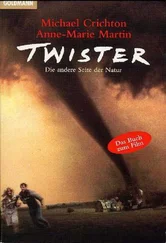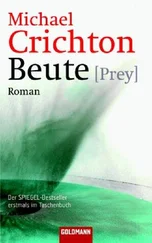It is important to recognize up front that the advanced technology that is the hallmark of our modern world was not itself the cause of this crisis—though it exacerbated it. The response to the Andromeda Evolution was unprecedented in its coordination and scientific sophistication. Yet it was this same scientific mastery that enabled tragic errors resulting in terrible destruction and loss of life.
Nevertheless, it is vital this story be told—now more than ever.
A greater number of human beings walk the earth today than at any other point in the history of our species. We are able to survive in our billions thanks only to the technological infrastructure we have built to sustain ourselves. And every last one of us could be gone tomorrow, confronted with the failure of that same infrastructure.
My hope is that this rigorous account of events will demonstrate both the capabilities and the limits of scientific progress—the good and the bad.
An accurate and detailed reconstruction was only possible thanks to the generous contributions of those who were involved in the disaster, directly or indirectly, as well as a small army of domain experts and fact-checkers. I wish to thank them all, though I must take responsibility for any errors or omissions that have crept into this manuscript.
For their chapter-by-chapter technical corrections, my sincere gratitude goes to Captain Jake B. Wilcox, US Air Force (Ret.); Liu Wang, PhD, China National Space Administration (CSNA); Deepayan Khan, PhD, Carnegie Mellon Robotics Institute; David Baumann, Chicago Dynamics Incorporated; Ricardo Boas, Department for Isolated Indians, FUNAI; and Jane Hurst, PhD, NASA Johnson Space Center.
The bulk of this work depended on the efforts of Dr. Pamela Sanders, a US Army colonel, professor, and head of the Department of Electrical Engineering and Computer Science at the US Military Academy at West Point. With the help of her indefatigable students, Dr. Sanders was instrumental in securing, transcribing, and categorizing thousands of hours of video footage, audio recordings, and raw sensor data recovered from body-mounted cameras, the logs of the International Space Station, salvaged aerial drones, and satellite-based surveillance systems (in cooperation with the National Reconnaissance Office).
I especially wish to thank the surviving members of the second-generation Project Wildfire, who were able to sit with me after their debriefings to verify even the most minute details. And for those members who did not survive, I offer my heartfelt thanks to the friends, coworkers, and family members who set aside their grief to share the intimate stories necessary to convey their loved ones’ unique constellations of personality, expertise, and motivation. It is thanks to their gracious efforts if these pages are able to breathe life and humanity into what could otherwise be a dry and technical treatment of events.
By compiling a multitude of personal viewpoints along with hard facts, I have attempted to capture the fear and wonder that fueled the deadly events of these five days. In some cases, the reader must bear with practical reports based on little more than hard data, but when possible, this reportage has been bolstered with subjective opinions, thoughts, and emotions reported after the fact. By using both avenues of information, I have taken the liberty of reconstructing events to provide a more traditional narrative experience.
Lastly and most importantly, this account would never have been possible without the groundbreaking work of the late Michael Crichton, MD—a visionary who shattered a code of silence and introduced a stunned world to the precursor events to this crisis. The original account of the Andromeda Strain, published fifty years ago, opened the eyes of millions of readers to the great potential and dire limitations of scientific progress. Along with countless others, I am forever in awe of and deeply indebted to Crichton’s contributions.
It may seem disheartening that this new crisis unfolded along the same fault lines of human hubris, miscommunication, and plain bad luck as the first Andromeda incident. However, it is not my intent to vilify or blame any institution or individual. In the moment, each of us necessarily believes we are the hero of our own story—even those of us later judged to be villains.
I will leave such judgments to you, the reader.
The scientists, astronauts, and soldiers who lived through the events described in these chapters were human beings, with strengths and flaws. Some showed surprising heroism in the face of annihilation, while others failed at crucial moments. But none acted in vain—for at the very least, we all of us are still here , still alive to read and learn from this unlikely chronicle of human survival, a saga known now by its code name: the Andromeda Evolution.
D.H.W.
Portland, Oregon
January 2019
Contents Cover Title Page THE ANDROMEDA EVOLUTION A NOVEL BY DANIEL H. WILSON Michael Crichton Copyright Dedication Acknowledgements Day 0: Contact Event Classification Fairchild AFB Alert Day 1: Terra Indigena Emergency Debris Avoidance Maneuver Heavenly Palace Code Name Andromeda Boots on the Ground Noon Field Briefing Manifest Day 2: Wildfire Dawn Discovery Twenty-Mile Perimeter A Higher Analysis Incomplete Information Second Camp Day 3: Anomaly Night Ambush Alpha and Omega In the Morning Light Outcomes Indios Bravos First Contact Plan B The Anomaly Fail-Safe Day 4: Breach Operation Scorched Earth Dawn Strike Entry Primary Descent Evolutions Forensics Fight or Flight State of Emergency The Tunnel Best-Laid Plans Inundation Activation Day 5: Ascent A New Paradigm Finger of God Realignment Z-Axis Mission Preparation Destination ISS Docking Procedure Stone’s Theory Reunited Goodbyes Intercepted Transmission Super-Terminal Velocity Resolution Out of Eden Epilogue Footnotes References Keep Reading … About the Authors Also by Michael Crichton About the Publisher
Event Classification Contents Cover Title Page THE ANDROMEDA EVOLUTION A NOVEL BY DANIEL H. WILSON Michael Crichton Copyright Dedication Acknowledgements Day 0: Contact Event Classification Fairchild AFB Alert Day 1: Terra Indigena Emergency Debris Avoidance Maneuver Heavenly Palace Code Name Andromeda Boots on the Ground Noon Field Briefing Manifest Day 2: Wildfire Dawn Discovery Twenty-Mile Perimeter A Higher Analysis Incomplete Information Second Camp Day 3: Anomaly Night Ambush Alpha and Omega In the Morning Light Outcomes Indios Bravos First Contact Plan B The Anomaly Fail-Safe Day 4: Breach Operation Scorched Earth Dawn Strike Entry Primary Descent Evolutions Forensics Fight or Flight State of Emergency The Tunnel Best-Laid Plans Inundation Activation Day 5: Ascent A New Paradigm Finger of God Realignment Z-Axis Mission Preparation Destination ISS Docking Procedure Stone’s Theory Reunited Goodbyes Intercepted Transmission Super-Terminal Velocity Resolution Out of Eden Epilogue Footnotes References Keep Reading … About the Authors Also by Michael Crichton About the Publisher
WHEN IT ALL BEGAN AGAIN, PAULO ARAÑA WOULD have been bored. Bored and sleepy. He was only a year from retirement from the National Indian Foundation of Brazil, known under its Portuguese acronym FUNAI. Stationed on the outskirts of government-protected land stretching across the Amazon basin, the sertanista was in his mid-fifties and had spent his career protecting the undeveloped interior of Brazil. He was sitting under a flickering, generator-run lightbulb, lulled to drowsiness by the rising morning heat and the familiar sounds of the untamed jungle outside the open windows of his monitoring station.
Paulo was at least thirty pounds overweight, sweating in his official olive FUNAI uniform, and seated before an old metal desk loaded with an eclectic array of electronic equipment. As was his habit, he was squinting down at his lap, his concentration focused intently on hand-rolling a tobacco cigarette with his blunt yet surprisingly agile fingers.
Читать дальше








